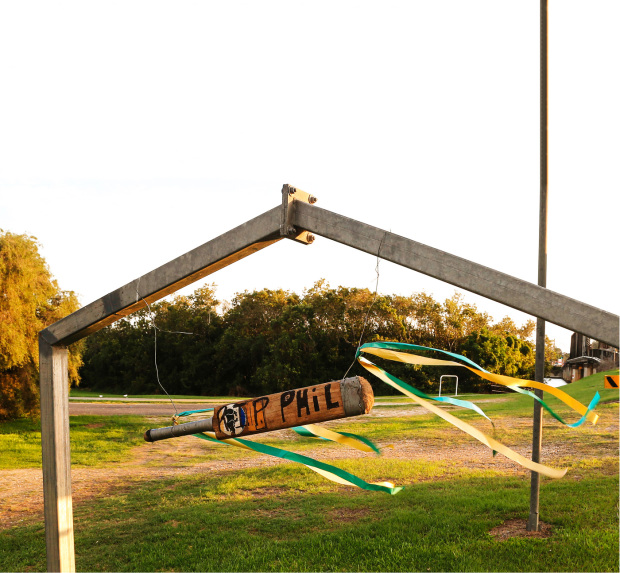Dinks in the fence
Chloe Saltau

|
|||
|
Related Links
Players/Officials:
Phillip Hughes
Teams:
Australia
|
|||
As he splayed his legs and clattered Morne Morkel behind point to raise the second of his two centuries at Durban in March 2009, it was easy to imagine Phillip Hughes belting ball after ball into the fence that, for left-handers, ran down the off side of his parents' backyard.
It was the Test that properly introduced to the world a technique that would thrill, fascinate and frustrate observers in equal measure. Of his 160 runs in that second innings, 100 came on the off side - and 85 between first slip and cover. Hughes was only 20.
His technique was homespun in the truest sense. Home was the family's banana and cattle farm at Macksville, the country town in northern New South Wales where he and his older brother, Jason, played out imaginary Test matches. Hughes learned quickly to steer clear of the vegetable patch behind his legs. That was where mum Virginia grew the tomatoes and chillies for her Italian cooking. He knew, too, that if he hit the chook pen, around long-on, he risked the ire of dad Greg.
Instead, Hughes taught himself to back away and make room to hit to off. He hammered that fence. "Now, if you go home and look at it," said Phillip in July, "it's got dinks all the way down." When he hit down the ground, he seemed to hurl his whole body at the ball - another product of his Macksville upbringing, when the brothers would dream up incentives to hit the back fence (four runs on the bounce, six on the full), the clothes line at extra cover (50 runs on the bounce, 100 on the full, "a hard one to hit"), and a couple of home-made sponsors' signs.
Even as Hughes became the youngest cricketer to score centuries in both innings of a Test, the South Africans felt they had his measure. Dale Steyn had him edging a bouncer in the first over of the previous match, and now sent down a barrage of short pitched bowling. Hughes adopted the approach that had worked against big fast bowlers who had tried to bully him ever since he was a 12-year-old in A-grade cricket, leaning back to slash over the slips.
His DIY technique was less successful during the 2009 Ashes, when England's fast bowlers aimed rising deliveries between his hip and shoulder, and Hughes was caught in the cordon four times in five innings. His off-side strength was also his biggest weakness, a legacy of habits formed in the backyard.
"Coming through the age groups, it did take me probably 12 months to two years to really nut out my leg-side scoring options," he said. "I had to knuckle down with my coaches. I had to play a lot more with my bottom hand. I had to get better." Hughes's appetite for hard graft paid off. He worked industriously on the hook, but had the discipline to shelve it for a Sheffield Shield game in December 2013, when New South Wales put two men behind square and peppered him with bouncers. He ducked, weaved and took 51 balls to move from 60 to 62, en route to a century. But Hughes was also determined to be himself: "I always liked to be a little bit different."
He uncoiled his full range of strokes en route to 202 not out in a one-day match against South Africa A in sleepy Darwin in July 2014. There were pulls, sweeps, open-chested drives and that devastating trademark cut, played as if doing the limbo. But there will be no more dinks in the fence at Macksville. Four months before his death, Phillip Hughes spoke to Chloe Saltau about the origins of his unorthodox batting technique.

